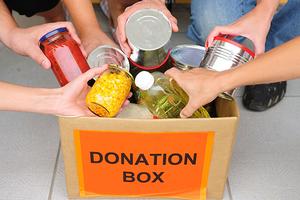Research
New Research Focuses on Coping with Food Insecurity

Almost 12 percent of American households lack access to enough food to maintain an active, healthy lifestyle. Researchers from AU School of Public Affairs (SPA), in partnership with Feeding America, the nation’s largest domestic hunger-relief organization, recently studied how families that use government and community food assistance programs overcome obstacles and manage to put food on their tables.
SPA Professor Alison Jacknowitz, SPA Associate Professor Anna Amirkhanyan, Michael Hatch, SPA/PhD ‘19, and Amy Crumbaugh, director of population studies at Feeding America, shared their findings in an article, “Exploring Challenges and Coping Strategies in Households Relying on SNAP and Food Pantries,” published in the Journal of Hunger and Environmental Nutrition in December.
Due to the fact that there had been limited research on food insecure populations that combine food assistance from the Supplemental Nutrition Assistance Program (SNAP) and food pantries, the authors collected qualitative and quantitative data from respondents in two states to learn about the ways these households acquired food, the challenges they experienced, and how they coped with them.
“People who rely on both federal and community-based sources of food assistance experience numerous health and personal hardships,” said Amirkhanyan.
Many have difficulty managing health conditions — an issue for about 60 percent of households studied, most often diabetes and cardiovascular disease. Others experienced challenges due to changes in employment, living arrangements and household composition, and transportation, among others.
“We heard from many households that the recommended diets for their health conditions made their food insecurity more serious,” said Jacknowitz. The recommended food is often healthier and more expensive, such as fresh fruits and vegetables, rather than processed and canned foods.
“Our respondents use a range of strategies that help them cope with these challenges such as relying on sales and promotions, buying inexpensive items, buying in bulk, getting help from others, portioning meals to make them last, and even limiting food intake,” said Amirkhanyan.
Ideally, researchers say charitable food pantries should tailor their offerings to the needs of subgroups affected by various health conditions. This might include sharing written recommendations for how to prepare food and bundling food options more appropriate for individuals with specific diseases such as diabetes, cardiovascular conditions, and osteoporosis.
Continuing with these data, the researchers are working on several other articles, including one that explores exactly what food is acquired using federal food assistance versus charitable food assistance. The hope is to illuminate how the benefits are combined and how the food is planned and consumed with these two sources in mind.
